Heather is a seasoned
Pinterest marketing expert & educator using the platform since you could reach the bottom of the feed - 2010.
About Heather Farris >
The Ultimate Pinterest Traffic Strategy for Bloggers & E-Commerce Shops
January 18, 2024
For years people like you & I have been wondering how to build a Pinterest traffic strategy. Now you may be wondering, Heather why are you wondering how to do this when you run an entire Pinterest agency?
Good question and here’s my short answer… the Pinterest algorithm is always changing and my team & I are always looking for new ways on how to get Pinterest traffic.
We have our strategies that have worked as a basis for years but we are testing new tactics.
When I first used Pinterest as a marketing tool with my mom blog I started driving traffic on November 30th. I signed up for a Black Friday deal on Tailwind and by January my blog had reached 105 sessions per day.
My Pinterest traffic doubled in over 30 days.
My little mom blog grew from 55 views per day from Pinterest to over 605 sessions per day in less than 60 days.
From there it grew but my heart wasn’t in that blog which is why I shifted away from it pretty.
I found something that was working and would allow me to make a real difference in the lives of other bloggers.
You see my real calling is service and I started offering Pinterest as a service in January of 2017 less than 4 months after starting my blog.
I had used Pinterest every day for the 6 years prior that it was on the internet and as a user, I had a deep understanding of how people utilized this platform.
I have now worked with bloggers getting them traffic numbers unseen by a lot of people online. 300,000 page views per month from Pinterest anyone?
How to get Pinterest traffic may be a secret still to some but I’m laying it all out there today and giving you the down low.
Getting a Pinterest traffic strategy in place isn’t easy but it’s worth the effort. Today I want to detail the 5 step roadmap of a Pinterest strategy for you.
It can be done! Look at the results my mom blog got after implementing what I knew would work on Pinterest.
Here’s a little truth for you though… you have to give Pinterest what it wants and you can’t love her and leave her. Consistency is crucial. As well as staying ahead of the trends, creating fresh content & playing by the rules.
What is Pinterest?
Pinterest is a visual search and discovery platform where people like you & I go to find recipes, workouts, clothing, and more.
When I first started using Pinterest as a newly married housewife in 2010 I looked for recipes & parenting tips.
It’s like a pinboard for all your digital ideas.
What are Pinterest Pins?
Pinterest pins are images linked to either a shop link, blog content, videos, landing pages, etc. on a third-party website.
The pins are either static images or videos that link out to content like this post I’m writing.
You can pin it or your audience can pin it for you. In most cases, both situations happen.
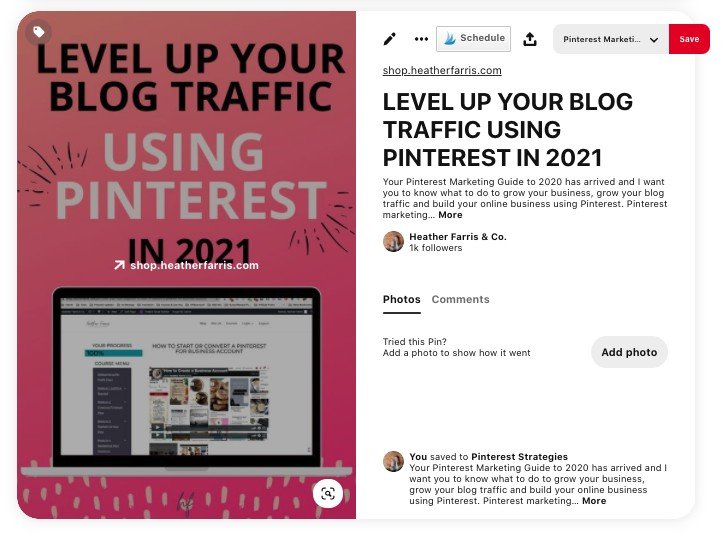
What are Pinterest boards?
Pinterest boards are where you will pin your Pinterest image to. Without boards, you have nowhere to store your pins.
Between pins & boards that is the majority of this platform. One cannot work without the other.
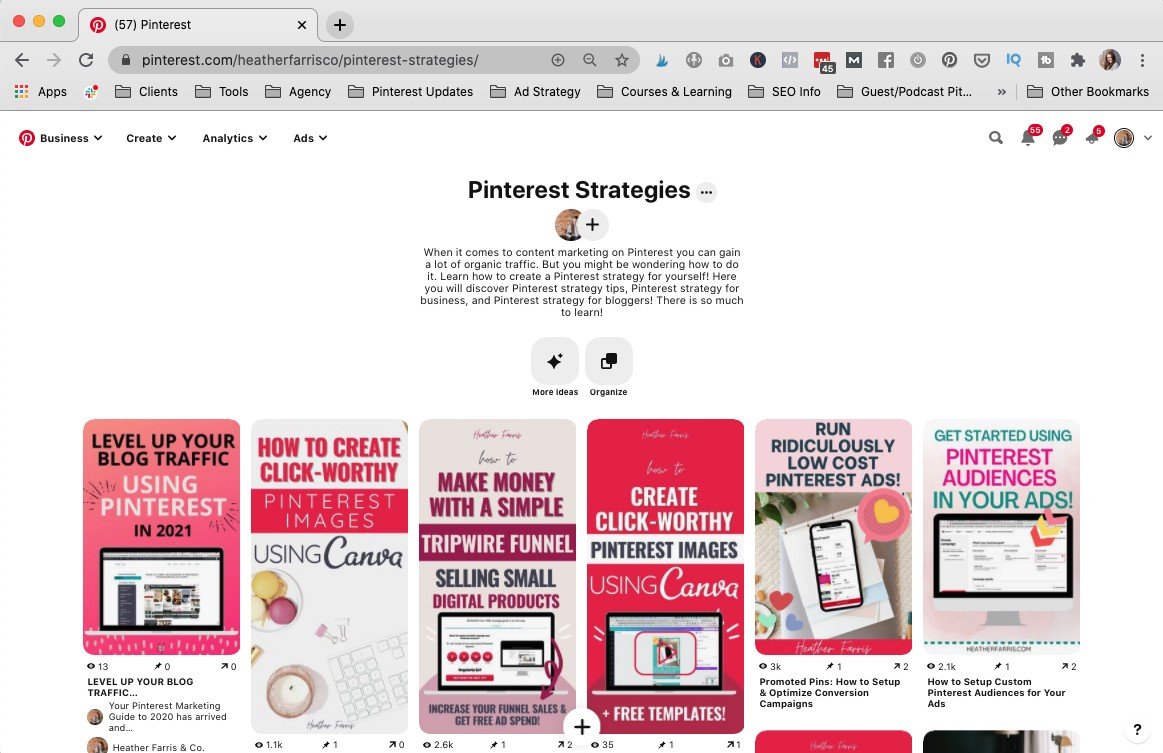
What Kind of Content Can Be Found on Pinterest?
Pinterest is made up of so much amazing content. As the years have worn on it seems like you can find anything you can imagine on this platform.
At one point in time, they let you view content by category but as it has evolved the categories are part of the search feature.
- Animals
- Architecture
- Art
- Beauty
- Children’s Fashion
- Design
- DIY and Crafts
- Education
- Electronics
- Entertainment
- Event Planning
- Finance
- Food and Drinks
- Gardening
- Health
- Home Decor
- Men’s Fashion
- Parenting
- Quotes
- Sport
- Travel
- Vehicles
- Wedding
- Women’s Fashion
Each of these interest categories has sub-interests under them which broadens the list even more.
There is even business-related content like blogging tips, graphic design, and more.
Pinterest Demographics
Who is the target audience for Pinterest? Great question!
In my article, Pinterest Statistics You Should Know I detailed the ideal target audience for this platform.
Pinterest is a place where:
- 71% of users are female
- 34% of users are 18-29
- 35% of users are 35-49 years old
- 16% of users are male
- 34% of Pinterest users make between $50,000 to $74,999 per year
- 90% of weekly pinners use Pinterest to make buying decisions
- 64% of users reported using the platform to search for new ideas, inspiration, and products that they can trust
Needless to say, if you target women or want to target the household decision-makers then Pinterest is a place you should consider for marketing your business.
Most of us are aware that women are the decision-makers of most households so ignoring Pinterest as a marketing channel may be resulting in money left on the table.
Pinterest is Not a Social Media Platform
I’m not sure if you know this yet but Pinterest is not a social media platform.
At its heart, it’s a search engine. Your audience goes to the platform and types unbranded search terms in the search bar to find ideas.
As a result, your content will also appear in other ways on the platform.
The way the algorithm works is to show you content similar to what you have searched for or engaged with already on the platform. It gets to know your search habits and shows you more content like what you search for or clicked on.
So your content may also appear in your audiences feed in the following ways:
- Related content
- Smart feed (home feed)
- Search results
So ensuring your content is clickable and interesting to your audience is vital to its success on Pinterest.
Pinterest for Bloggers
The strategy I’m going to breakdown in this blog post is going to cover bloggers as well as shop owners. Let’s chat about Pinterest traffic for bloggers first.
Using Pinterest for marketing as a blogger is a great way to get free traffic to your site.
You can even use Pinterest to sell digital products and grow your email list which is such a powerful tactic.
For bloggers, my suggestion is to start with a content planning session and using Pinterest trends to figure out what is popular in the coming months.
I’m going to go more into detail on the strategy to follow.
Do I Need a Website to Sell on Pinterest?
For all of my strategies, you will need a website to sell on Pinterest. Whether you sell information or products I feel a long-term growth strategy is best served with a website you own.
This way you can gather emails as a secondary marketing strategy. This will not only benefit you going forward but give you a direct line to your audience.
So yes, you should have a website you own.
Why is Pinterest Good for E-Commerce Sales?
Pinterest is better for getting your products in front of buyers especially when used as a long-term strategy.
Social media networks are notorious for your content being irrelevant and nearly impossible to find after a few days.
Pinterest content lasts on average 3.5 months but can be found through a search for years beyond its original publish date.
Since 90% of users in the U.S. have reported making purchase decisions after using Pinterest I would say this is a good platform for you. With a few exceptions.
Some niches aren’t as popular or relevant on Pinterest.
We are going to dive deeper into audience research in this article but for now, know not every niche is represented or relevant on the platform.
For example, HVAC companies may not find as much traction using organic strategies but using ads locally could prove to be a good source of traffic.
In this article, we are focusing on organic traffic and won’t be talking about service-based local businesses.
My goal is to help my e-commerce sellers selling gifts and information in those categories above to establish themselves using Pinterest.
Pinterest is Better Than Facebook for Building Loyal Customers
Let’s just be honest with ourselves for a moment… the days of 2010-2012 are over and organic Facebook traffic strategies are harder than ever to achieve.
Ads are expensive on Facebook & Instagram and it’s nearly impossible to reach your entire audience without paying.
Plus the audiences between social media and search engines are vastly different. The purpose of each platform is different.
Pinterest Traffic Strategy Step by Step
Let’s talk about the pieces you need to get Pinterest traffic. Each of these is very similar but we will talk about e-commerce shops with and without a blog as well as bloggers.
Pinterest Traffic Strategy for Bloggers & E-Commerce Shops
- Research your keywords
- Create content around trends
- Design Pinterest graphics using research
- Write high-quality Pinterest descriptions & pin titles
- Publish pins to the most relevant boards first
Now, this is just the getting started list. Your long-term strategy should include creating pins for digital product funnels, opt-in landing pages, and sales pages too.
We aren’t using Pinterest to promote free content but also our email lists and paid content.
The basis for every Pinterest client of ours is to get their foundation in place. This consists of an optimized profile & an organized content inside your Pinterest system.
More on the strategy to come but first let’s cover the basics for e-comm shops then we will dive deeper.
How Do I Promote my E-Commerce Store on Pinterest?
Promoting your e-commerce shop and selling on Pinterest is as easy as creating shoppable pins linked to your products.
Pinterest has also provided catalogs that are made up of your shop products as well as a verified merchant program.
These have enabled e-commerce shops to make it easier for people to buy their products.
E-commerce sales strategies on Pinterest can include promoting directly to shop pages.
You can also promote blog pages where you write about the pain points your audience has and how your product solves them.
My suggestion for e-commerce shops is to take lifestyle and product photos of your shop items and create pins with them.
Showcase your product in use so your audience can see themselves using your product.
How Do I Get Shoppable Pins?
Shoppable pins can be enabled by doing one of two things.
Turn on product rich pins (more on this later) and ingesting a catalog feed to Pinterest.
These methods will allow your pins to show up as products with stock information, pricing, and a short description.
Can you sell products on Pinterest?
Yes, yes you can but you probably knew this already. I have a dozen product sellers using our ad service and we sell everything from natural skincare products, green cleaning products, backpacks, lunch boxes, makeup, and more.
Setup your Pinterest for Business Account
I detailed this process in depth in my post How to Start a Pinterest Account the Right Way.
Start your Pinterest account and either add a business account for free to your existing personal account or start a new account.
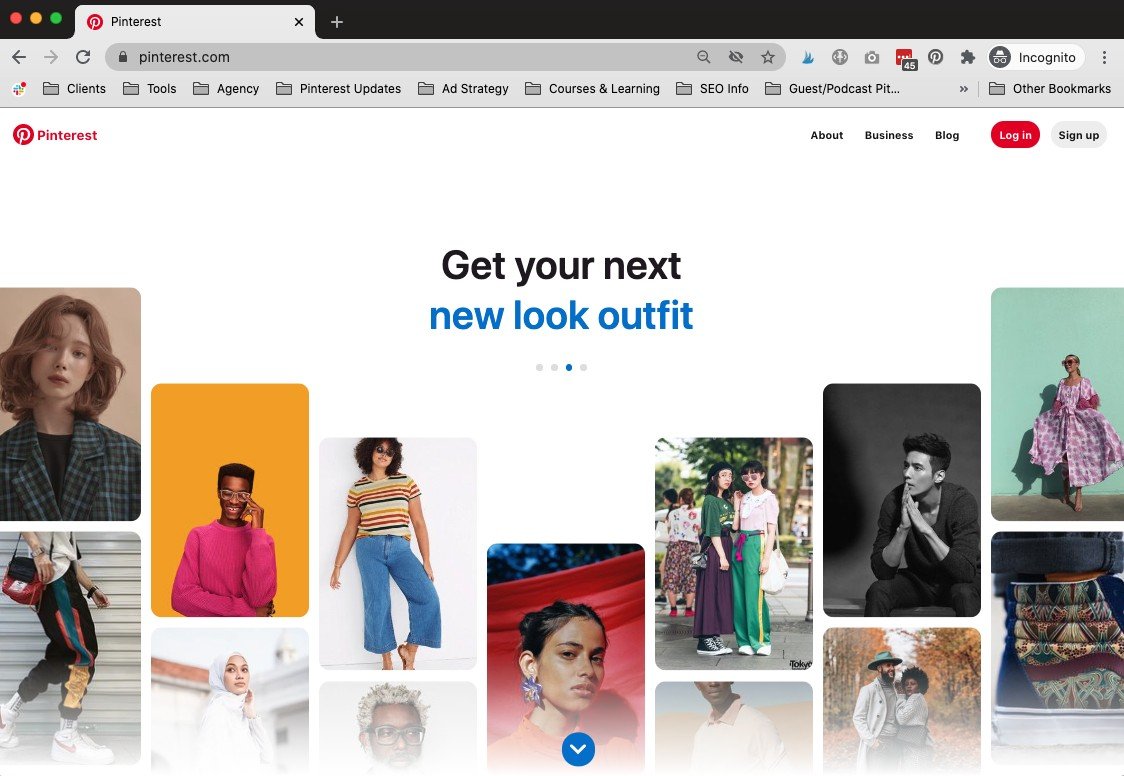
Complete Your Pinterest Profile
Make sure to get into your settings and fill out your profile. Your display name should be your business name.
Your bio should tell your audience about your business and don’t forget to add a couple of keywords in there!
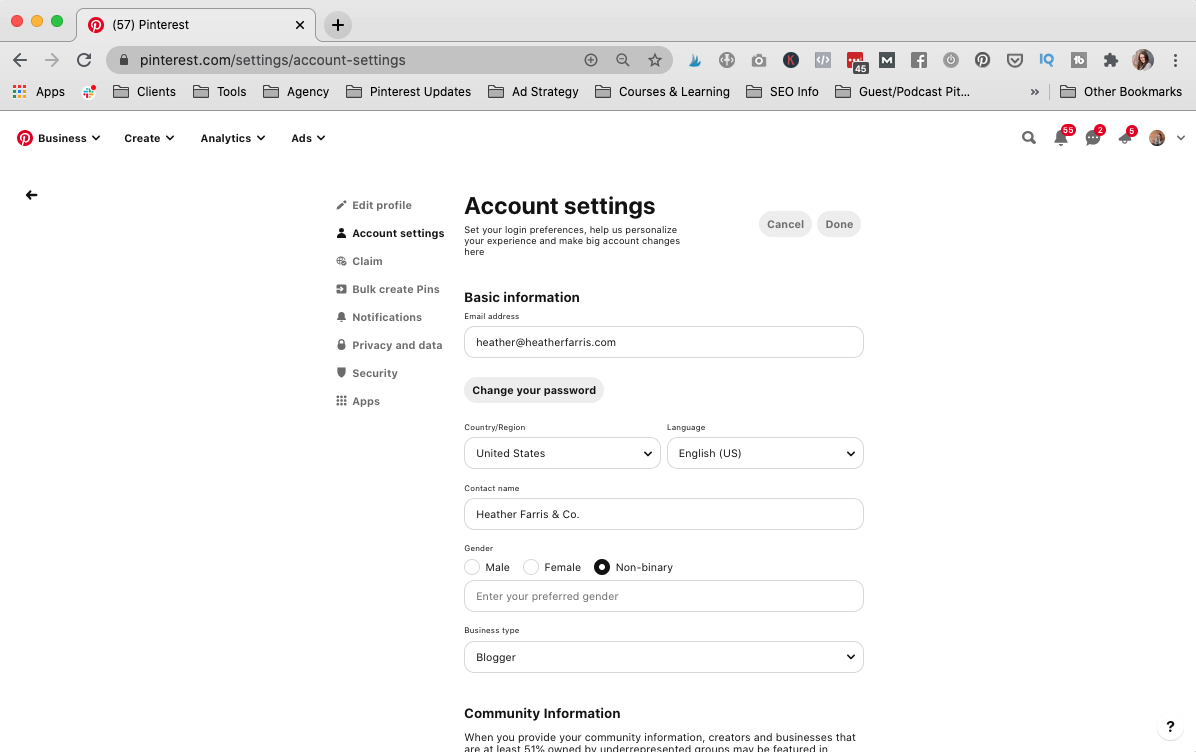
Claim Your Website & Apply for Rich Pins
Claim your website so you can get access to analytics, audience insights & advertising.
You don’t need a claimed domain to use these tools but it’s definitely to your benefit.
You can claim your website, Etsy store, YouTube channel & Instagram handle in your Pinterest settings.
What are Rich Pins Exactly?
Rich pins are juiced up Pinterest images with an extra layer of data on them that give your audience more detail about your pin.
You’re going to apply for rich pins for your site and this will vary depending on the type of website. To learn more about applying for rich pins visit our post How to Enable Rich Pins on Your Website.
Rich Pins are available for the following:
- Articles
- Products
- Recipes
What Does a Rich Pin Look Like?
Rich pins are more appealing to your audience giving them more detail and encouraging them to follow you and visit the site.
The type of rich pin will determine how it looks to your audience.
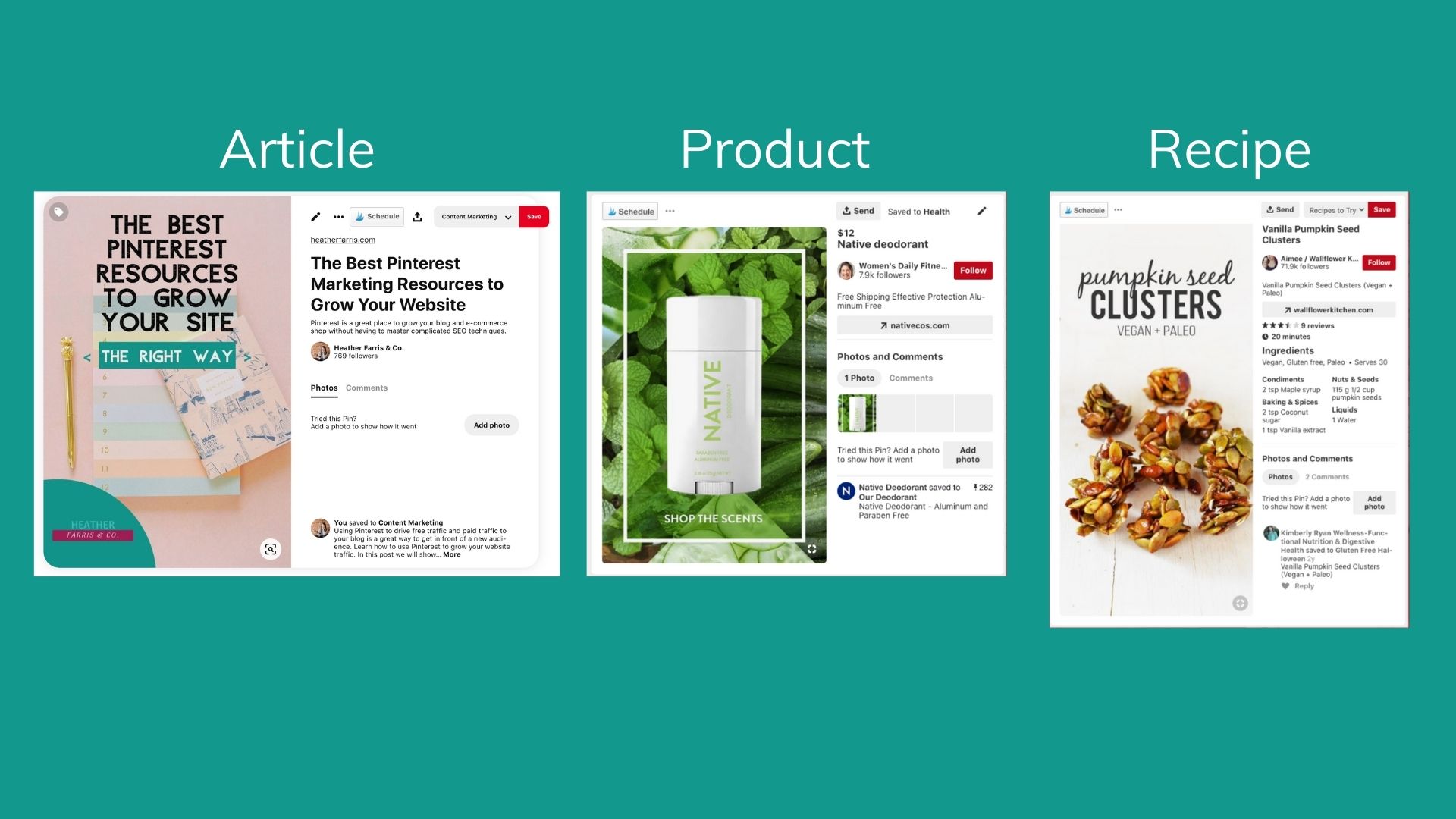
Start Your Research for Your Niche
Pinterest SEO is vital to your success on Pinterest and before you start creating boards you should do some research. This will help guide you on what boards you need to create as well as the descriptions you will write.
Finding keywords on Pinterest is as easy as using the search bar, looking at the search results, using related keywords found within the pin results, and using Pinterest trends.
To learn more in-depth about how to find keywords read Pinterest SEO: What Are Your Customers Searching For on Pinterest?
Once you have your beginning keywords in place you can start crafting your optimized profile.
To find keywords to use on your profile and pins I want you to start by brainstorming the buckets of content or products you sell.
For example, if you sell green cleaners then your buckets can be cleaning products by room, cleaning tips, eco-friendly living tips.
Each bucket will have various keyword lists you can use.
Create Your Pinterest Boards
With your research, you’ve now found you’re going to start creating boards for your pins to live on.
It’s important to not create boards that are broad or cover too many topics. Think of each board as a single topic and optimize it accordingly.
For example, on our travel blog Wheeling to Dream I created boards based on our buckets of content.
Each bucket has 3-5 boards covering different angles and each board is optimized differently.
For example, RV Living with Kids is much better than RV.

Optimizing Your Pinterest Boards
To properly optimize your Pinterest boards you will give the board a strong keyword title and write a description for it.
Your descriptions are 500 characters long so be sure to use all of those if you can. My suggestion is to use 5 keyword phrases and write one sentence per keyword. That should get you 500 characters or really close to it.
Tips for Saving Pins to Your Boards
Once you have your boards created you may need to save other people’s pins to it, to begin with. That’s totally fine!
My biggest tip is to search for the board title and find pins that are on-topic for that board.
Choose about 10 pins that visually look good, are on-topic, and click on them. Make sure they lead to real websites.
This is what I like to call quality assurance. The pins you put on your boards must be relevant to the board SEO.
Save those pins to the board and move on doing this for each board you create.
Create Your First Pinterest Pin
It’s a bit of a mystery how to design a Pinterest pin that people actually click on.
There is a bit of method to the madness but generally speaking, you want to create visually appealing pins, tell your pinner what it’s about and call them to action.
To learn How to Make Pins in Canva you’ll want to read that post but we are going to cover the basics here or watch this playlist.
Inside Canva you will choose the template for a Pinterest pin.
Make sure you have your research ready to go so you don’t spend a ton of time on this.
I like to pre-write my pin titles so I can simply tweak them a bit during the graphic design process (as needed).
The pin title you create and put on your text overlay should contain the main keyword you want to target.
- Step 1: Choose a template to use.
- Step 2: Choose a stock image or product photo and add it to your template
- Step 3: Put your text overlay (pin title) that you wrote on the pin
- Step 4: Customize your colors and elements
- Step 5: Download it
Optimizing Your Pinterest Pins
Since you used your main keyword on your text overlay you’re already starting with an optimized pin. There is more that we are going to do next though.
- Step 1: Upload your pin to Pinterest
- Step 2: Paste your pin title into the pin builder.
- Make sure your main keyword is towards the beginning of your pin title. I like to make sure it’s in the first 40 characters.
- Step 3: Write your pin description in the pin builder. I personally write these in our Pinterest system and paste it into the pin builder.
- PRO TIP: Use 1 main keyword and 4 supporting keywords so people can find your pin searching in different ways.
- Use 5 keywords total and write 1 sentence per key phrase. Try to use all 500 characters and do not keyword stuff your content.
- Step 4: Paste the destination URL
- Step 5: Choose the most relevant SEO optimized board
- Step 6: Tag relevant products (only for e-commerce shops)
- In this step, you can click the price tag icon and paste your shop links to tag relevant products in your pin image.
Join Pin Profit Academy
Promoting Your Content on Pinterest
Next, we are going to talk about promoting your content (no actually paying for ads) on Pinterest. You can do this with a manual pinning strategy or using a tool like Tailwind.
I personally use Tailwind as do all of our clients.
Sign up for Tailwind
You can join Tailwind for a free and they will give you the ability to try the platform out without paying right away.
You can sign up using your Pinterest account with just a couple of button clicks.
What is Tailwind?
A tailwind is a publishing tool for Pinterest & Instagram content. It automates your efforts so you can be strategic with your content creation and publishing.
This allows you to do your research in advance, create your images, and schedule them so you don’t need to be live pinning all day.
They go out according to when your pinners are most likely to be online.
Tailwind offers a variety of tools in their plans including a smart schedule which is when your pinners are more likely to be online.
Among their other tools also includes tribes, board lists, pin inspector, board insights, and more.
Read How to Use Tailwind for Pinterest & Automate Your Pins in One Hour Per Week (OR LESS).
Joining Tailwind Communities
I recommend joining Tribes from the start so you can push your pins out to like-minded pinners sooner.
Tailwind Communities is a group of people like yourself who are sharing content into a tribe and you collaborate by sharing their pins out.
It’s a great way to get your content seen on the platform and get in front of more audiences.
I won’t be talking about group boards in this post but instead, I encourage you to join communities that are relevant to your content.
This is not a necessary part of your strategy. You do not need to repin anyone elses content.
Scheduling Your Pinterest Pins
I personally like to optimize my pins inside my blog post first then pin it to Pinterest.
Once I have pinned it to the most relevant board manually I pull the pin into Tailwind drafts and send it to a list of relevant boards.
While I’m setting up those boards on my pin I go ahead and check the box to add to tribes then schedule my pin to my queue.
I run through a list of 7 boards at a time, one board per day until it runs out.
If I have more boards that are relevant I will go ahead and pull it back into my drafts and schedule those remaining boards for the second week.
Related: Watch this playlist on Pinterest Schedulers
How Many Pins Should You Pin a Day?
This is by far the most asked question I get and so many creators are focused on this irrelevant rule.
Many “experts” will tell you to pin a certain mix of pins and to put anywhere from 30-50 pins in your schedule per day.
This is just outdated and doesn’t really matter.
What I tell my clients depending on where they are in business is to start with 3-5 pins in their schedule per day. When they get more content we start to increase that daily schedule more.
It’s more important to be strategic with your pins, keywords, and boards than how many pins you send out per day.
Reading Your Analytics
If you do all of this but you don’t read your Pinterest analytics then you are wasting time.
Understanding your Pinterest analytics is pretty simple.
I wrote this post How to Incorporate Pinterest Analytics into Your Pinterest Marketing Strategy that goes deep into this.
Essentially you need to look at Pinterest impressions vs clicks.
If you have high impressions but no clicks your pin isn’t resonating and you likely need to make new versions.
If you have low impressions and no clicks you haven’t done a good job optimizing for keywords.
Read your analytic reports (especially Google Analytics) and make sure you are leaning in on that data to inform your Pinterest traffic strategy.
Other Pinterest Marketing Tips for Success
There are other things you can do to ensure the traffic you are sending to your site sticks around and comes back again.
Optimize your shop listings & blogs for Pinterest users. I like to use graphics, shorter skimmable paragraphs, lists, and videos to break up my posts.
This helps to aid in a more user-friendly site experience.
Make sure your site is fast and your images are optimized too!
Using social sharing icons that allow your users to pin the post or shop item for later or share it to social networks.
People love to share if you give them a way to do it. Don’t make it hard!
Sharing Buttons
I love and use Social Warfare by Warfare Plugins as my share buttons. They also give you a pin it button and you can optimize your content to be exactly what you want to be shared.
In your post editor, you can optimize your title, description, and images. That way when they share it’s optimized for others to find it!
Win-win.
Use Milotree Popups
I use MiloTree and have used it for nearly 4 years. This little tool has allowed me to increase my followers and email subscribers without any extra effort.
Wrap Up
Wow okay, that was a lot and you may still have questions which are why I create additional posts for each strategy. That way I can cover each strategy in detail.
Using a Pinterest traffic strategy to sell on Pinterest and to grow your email list is such a great way to build your audience.
No more guessing friends! Implement what you learned here and I promise you will see results. If all else fails you can join Pin Profit Academy which is our in depth Pinterest membership program. that goes deep into our strategy for everything you learned here.
Pin It For Later
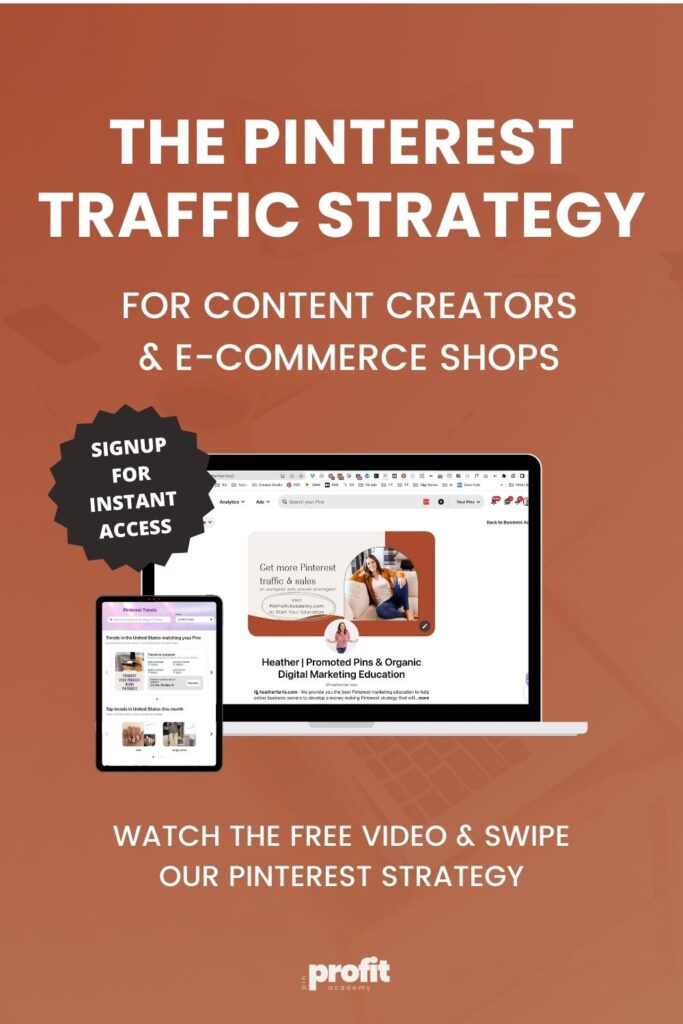
Heather Farris went to school for accounting and worked for years in banking and finance. After finding all of that entirely too boring she started her first blog in her basement in August of 2016. She has started 3 blogs in the marketing, motherhood and travel niches and used Pinterest to grow them all. She quickly became the go-to Pinterest strategist in her peer circles and has been implementing strategies, driving traffic and sales through organic and paid tactics for her clients. On this blog and her YouTube channel, as a renowned Pinterest marketing expert, she educates the public about clear and transparent marketing strategies to help them to grow on Pinterest and in other places online as a renowned Pinterest marketing expert.

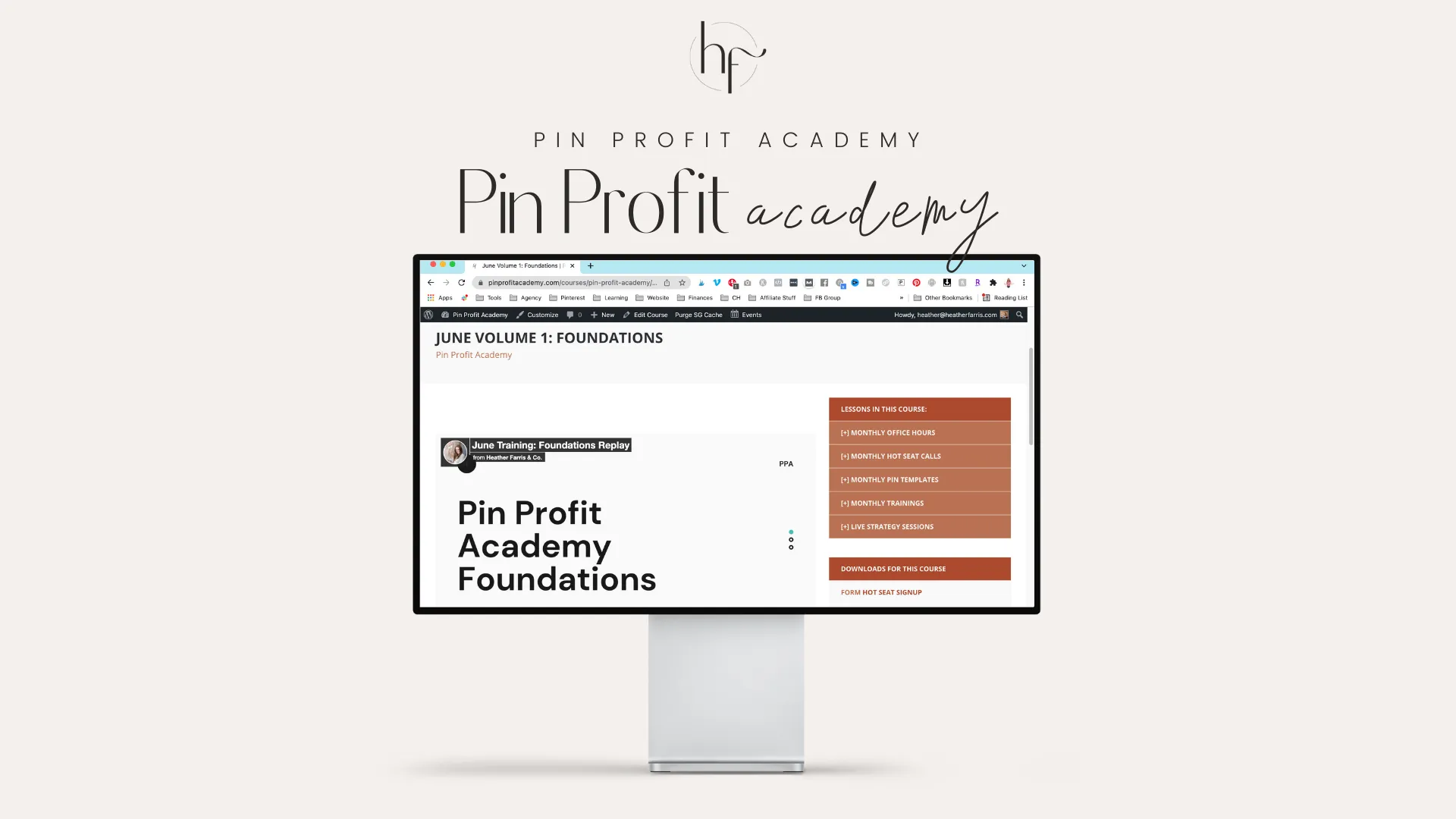
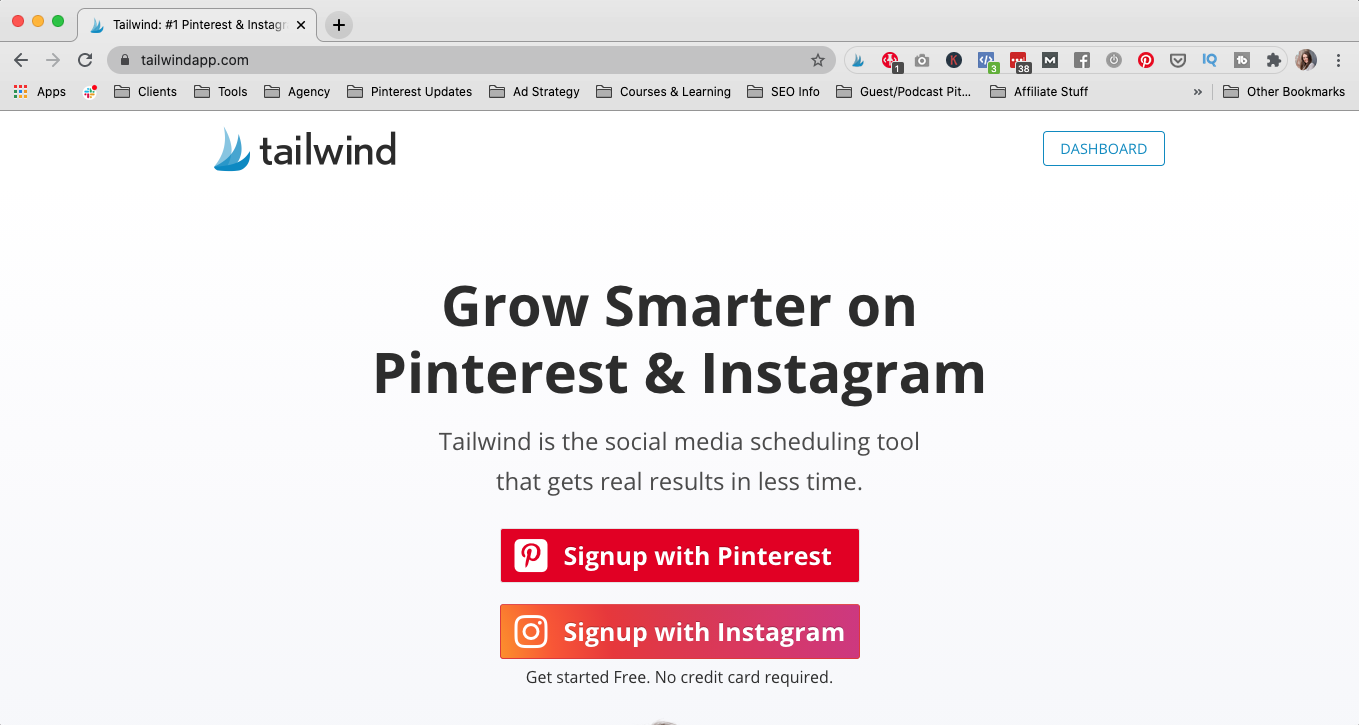
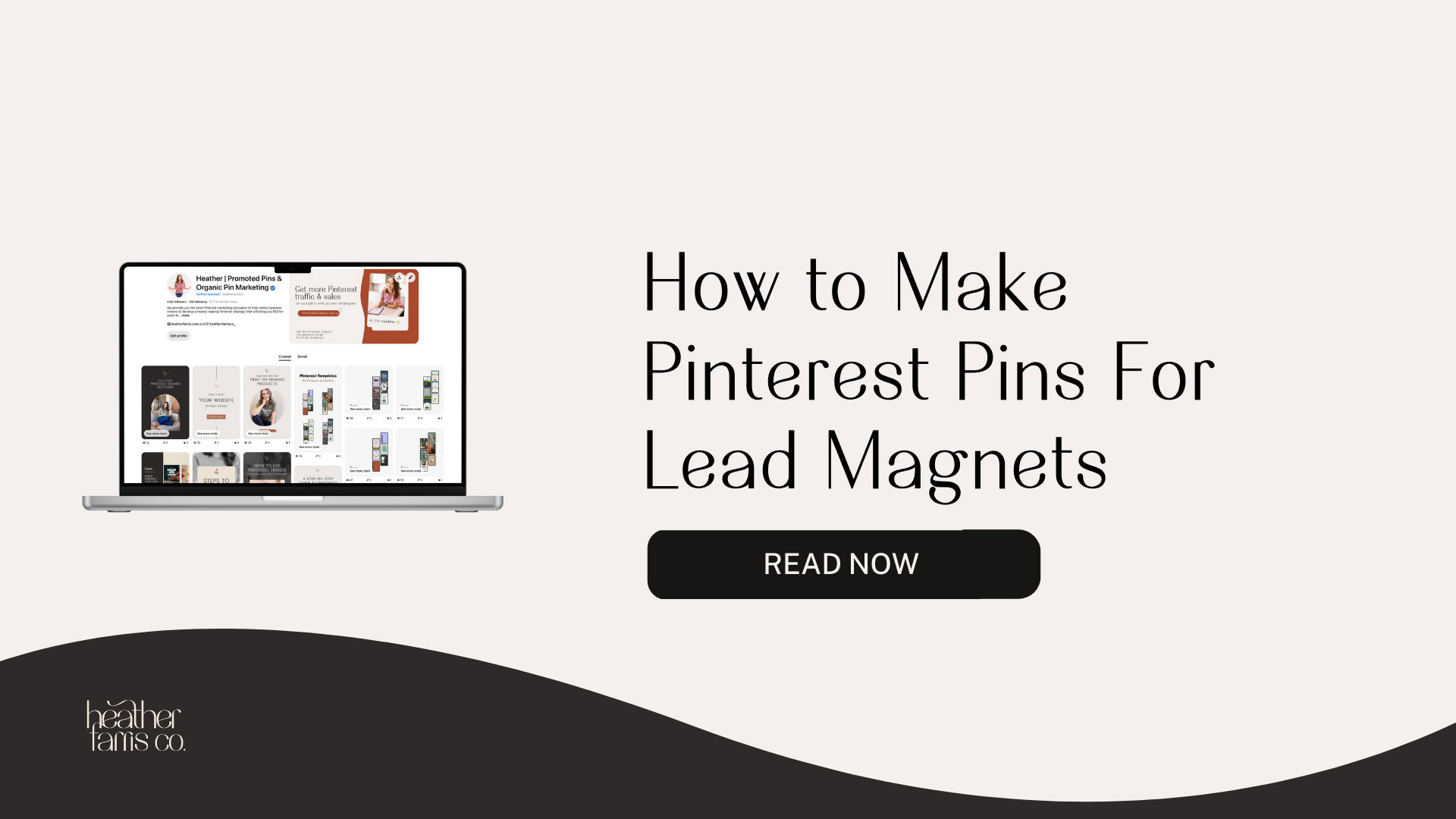
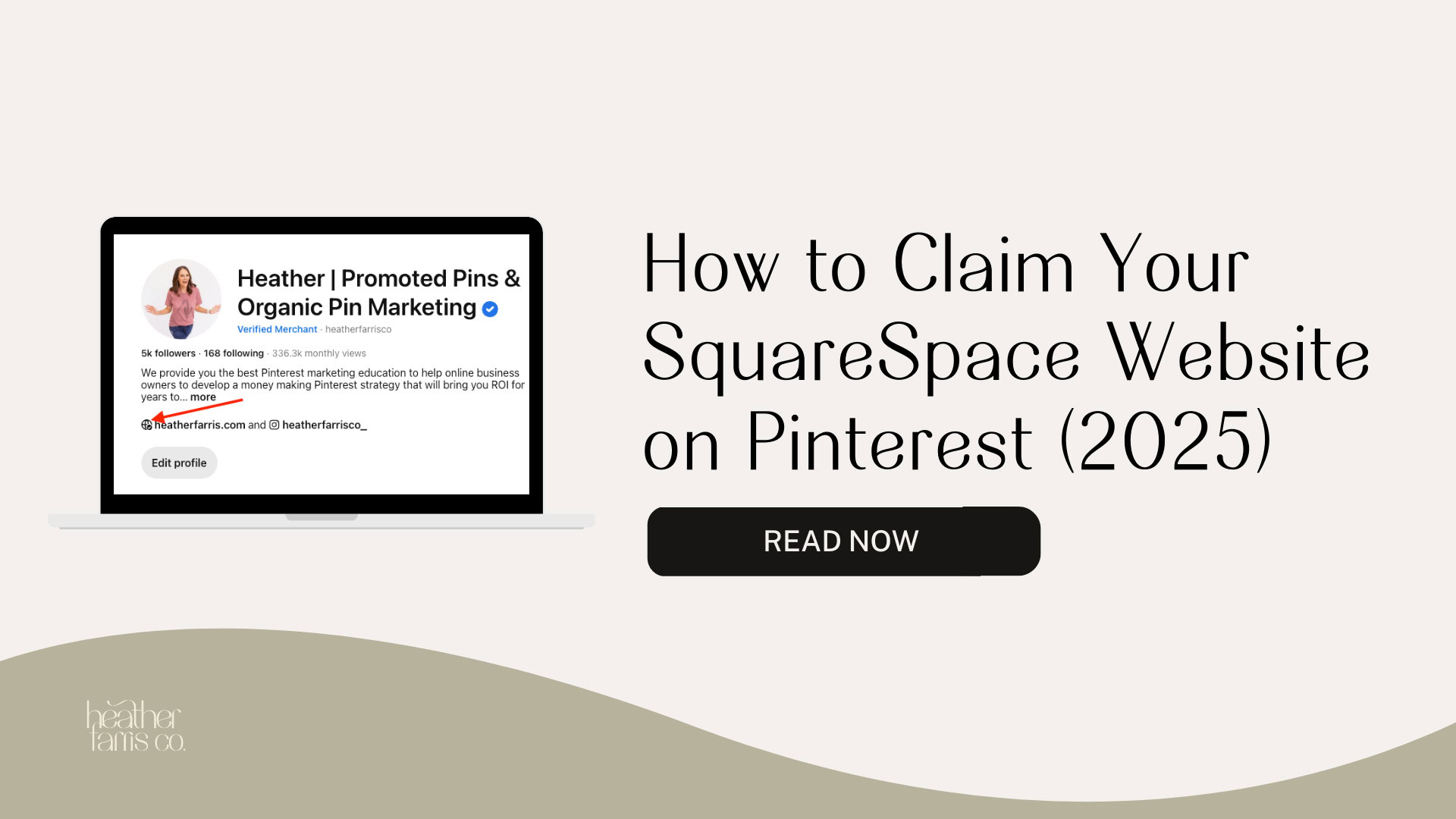
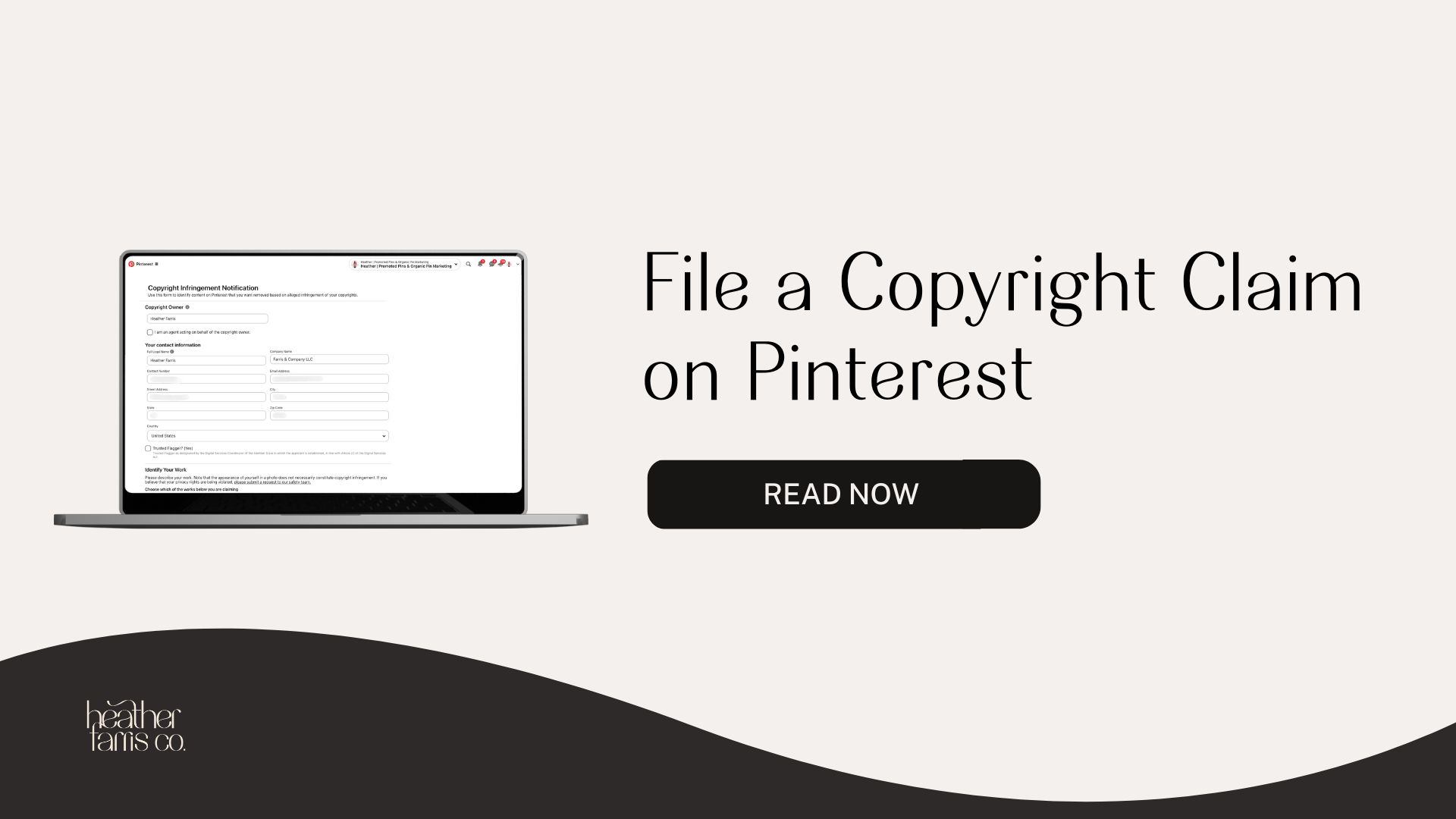

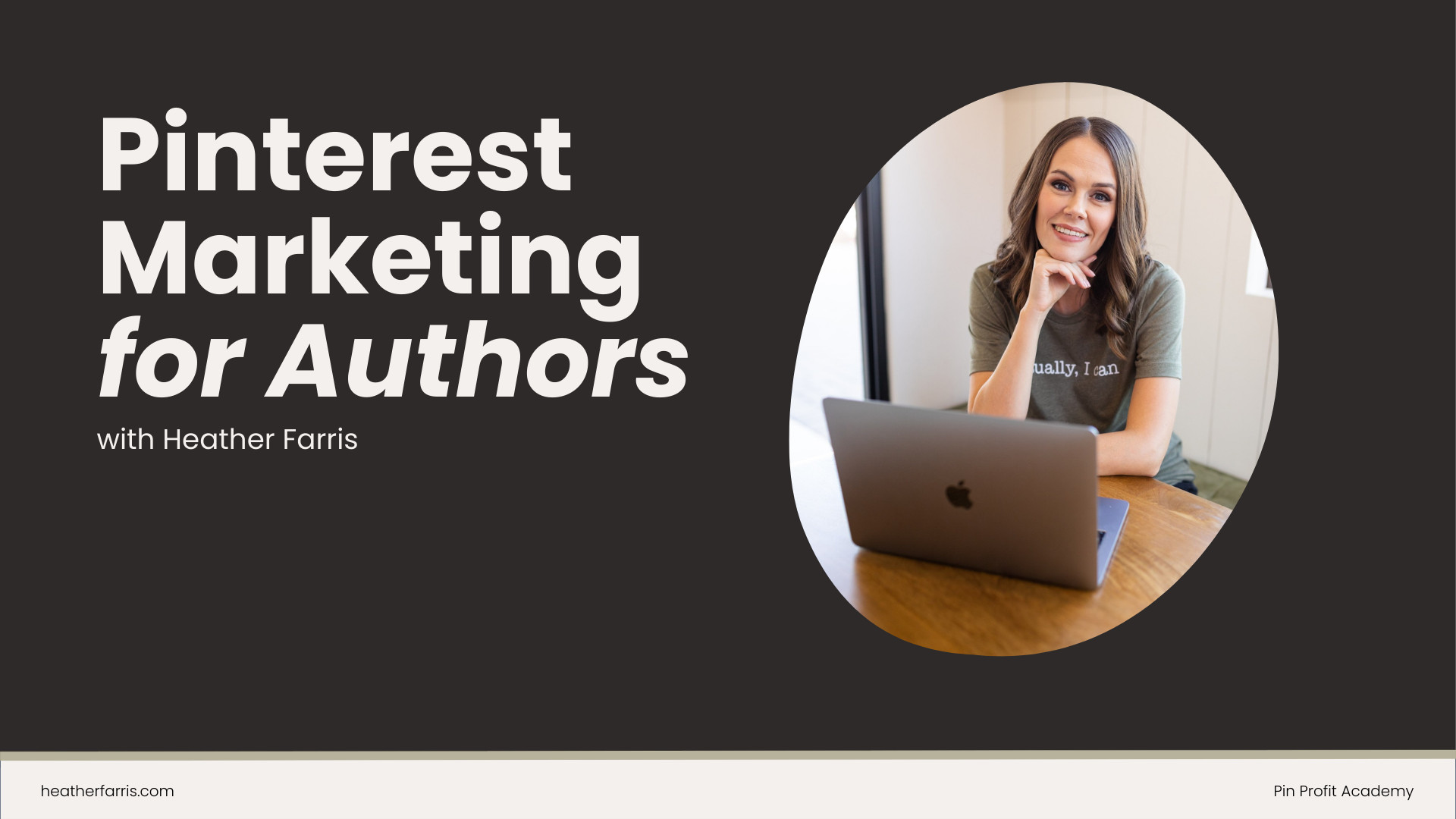

Great stuff.One of the best post out there by far.Thanks a lot for bringing so much value here. I enjoyed reading this
Keep up the excellent piece of work, I read few blog posts on this internet site and I think that your website is real interesting and has got circles of good information.